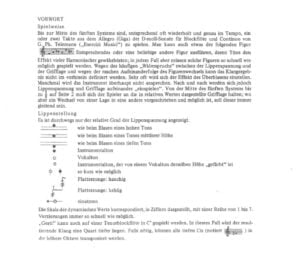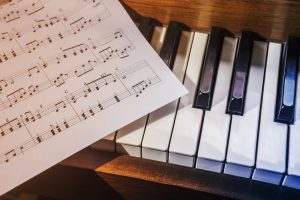Table of Contents
Remembering Luciano Berio

Luciano Berio
Luciano Berio OMRI (24 October 1925 – 27 May 2003) was an Italian composer noted for his experimental work (in particular his 1968 composition Sinfonia and his series of virtuosic solo pieces titled Sequenza), and for his pioneering work in electronic music. His early work was influenced by Igor Stravinsky and experiments with serial and electronic techniques, while his later works explore indeterminacy and the use of spoken texts as the basic material for composition.
Luciano Berio was one of the most notable exponents of the international musical avant-garde. He studied with Giorgio Federico Ghedini and with Luigi Dallapicolla. In 1955 he founded, with Bruno Maderna, the RAI Phonology Studio in Milan. His works, marked by a constant concern for sound matter, are characterized by their adherence to serialism and the experimental procedures of the 1950s.
Best Sheet Music download from our Library.
Some compositions worth highlighting are Variations (1954), Homage to Joyce (1958), Visage (1961), Concerto for Two Pianos (1973) and The True Story (1982). In the nineties he alternated his creative work with conducting, visiting Spain with the Frankfurt Radio Symphony Orchestra. In 1998 the compilation of his work Sequenze appeared .
Born into a family of composers, he received his first musical notions from his father, which he completed at the Milan Conservatory. After the Magnificat for two sopranos, choir and instrumental ensemble (1949), a work close to Stravinsky ‘s neoclassicism , he composed light avant-garde music in which he applied the serial methods of Luigi Dallapiccola , and whose humor would be present in most of his later works.
Please, subscribe to our Library.
If you are already a subscriber, please, check our NEW SCORES’ page every month for new sheet music. THANK YOU!
In 1954 he founded, together with Bruno Maderna , the Phonology Studio of the RAI in Milan, the result of his research in the field of electronic music, which became one of the most important centers of avant-garde music. (1958) marked an important milestone in his electroacoustic production The work Homenaje a Joyce . The pieces he composed during this decade are characterized by being based on simple and spontaneous writing that gives a predominant role to linguistic aspects. After a period of residence in the United States (1965-1972), he directed the electroacoustics department of IRCAM in Paris (1973-1980), and upon his return to Italy he was in charge of the Milanese delegation of said organization. He was married to the singer Cathy Berberian, his collaborator on works such as Folk Songs.

Inscribed in the most advanced avant-garde currents of the post-war period, Luciano Berio’s work surprises with its absolute novelty. Interested in the possibilities of electroacoustic media, during his time at the RAI Musical Phonology Study he carried out interesting experimental work, later applied in some of his compositions. In his production, music and voice play a carefully studied role of reciprocity, in which linguistic and musical meaning reach a perfect balance.

Some of his most interesting works are Variations for chamber orchestra (1953), Nones (1954), Allelujah per orchestra (1956), Circles (1960) and Laborintus II for voice, instruments and magnetic strip (1965). One of the most striking features of his style is his skillful and original use of collage, evident in scores such as Symphony for Eight Voices and Orchestra (1968), in which the most diverse literary and musical elements come together. stands out Of his composition for the stage, the opera The True Story (1982) . In his later production, Luciano Berio demonstrated a certain tendency to give greater prominence to the traditional symphony orchestra.

Sequenza
Berio meets Princess Beatrix and Prince Claus of the Netherlands in the Hague in 1972.
Berio composed a series of virtuoso works for solo instruments under the name Sequenza. The first, Sequenza I came in 1958 and is for flute; the last, Sequenza XIV (2002) is for cello. These works explore the full possibilities of each instrument, often calling for extended techniques.
The various Sequenze are as follows:
Sequenza I for flute (1958);
Sequenza II for harp (1963);
Sequenza III for woman's voice (1966);
Sequenza IV for piano (1966);
Sequenza V for trombone (1966);
Sequenza VI for viola (1967);
Sequenza VII for oboe (1969) (rev. by Jacqueline Leclair and renamed Sequenza VIIa in 2000);
Sequenza VIIb for soprano saxophone (adaptation by Claude Delangle in 1993);
Sequenza VIII for violin (1976);
Sequenza IXa for clarinet (1980);
Sequenza IXb for alto saxophone (adaptation by the composer in 1981);
Sequenza IXc for bass clarinet (adaptation by Rocco Parisi in 1998);
Sequenza X for trumpet in C and piano resonance (1984);
Sequenza XI for guitar (1987–88);
Sequenza XII for bassoon (1995);
Sequenza XIII for accordion "Chanson" (1995);
Sequenza XIV for cello (2002);
Sequenza XIVb for double bass (adaptation by Stefano Scodanibbio in 2004).Il miglior download di spartiti dalla nostra libreria.
Berio is known for adapting and transforming the music of others, but he also adapted his own compositions: the series of Sequenze gave rise to a series of works called Chemins each based on one of the Sequenze. Chemins II (1967), for instance, takes the original Sequenza VI (1967) for viola and adapts it for solo viola and nine other instruments. Chemins II was itself transformed into Chemins III (1968) by the addition of an orchestra, and there also exists Chemins IIb, a version of Chemins II without the solo viola but with a larger ensemble, and Chemins IIc, which is Chemins IIb with an added solo bass clarinet. The Sequenze were also shaped into new works under titles other than Chemins; Corale (1981), for example, is based on Sequenza VIII.
As well as original works, Berio made a number of arrangements of works by other composers, among them Claudio Monteverdi, Henry Purcell, Johannes Brahms, Gustav Mahler and Kurt Weill. For Berberian he wrote Folk Songs (1964; a set of arrangements of folk songs).

He also wrote an ending for Giacomo Puccini’s opera Turandot (premiered in Las Palmas on 24 January 2002 and in the same year in Los Angeles, Amsterdam and Salzburg) and in Rendering (1989) took the few sketches Franz Schubert made for his Symphony No. 10 and completed them by adding music derived from other Schubert works.
Transcription is a vital part of even Berio’s original works. In “Two Interviews”, Berio mused about what a college course in transcription would look like, looking not only at Franz Liszt, Ferruccio Busoni, Igor Stravinsky, Johann Sebastian Bach, himself, and others, but to what extent composition is always self-transcription.
In this respect, Berio rejected and distanced himself from notions of collage, preferring instead the position of “transcriber”, arguing that “collage” implies a certain arbitrary abandon that runs counter to the careful control of his highly intellectual play, especially within Sinfonia but throughout his “deconstructive” works. Rather, each quotation carefully evokes the context of its original work, creating an open web, but an open web with highly specific referents and a vigorously defined, if self-proliferating, signifier-signified relationship. “I’m not interested in collages, and they amuse me only when I’m doing them with my children: then they become an exercise in relativizing and ‘decontextualizing’ images, an elementary exercise whose healthy cynicism won’t do anyone any harm”, Berio told interviewer Rossana Dalmonte.
Perhaps Berio’s most notable contribution to the world of post-WWII non-serial experimental music, running throughout most of his works, is his engagement with the broader world of critical theory (epitomized by his lifelong friendship with linguist and critical theorist Umberto Eco) through his compositions. Berio’s works are often analytic acts: deliberately analysing myths, stories, the components of words themselves, his own compositions, or preexisting musical works.
In other words, it is not only the composition of the collage that conveys meaning; it is the particular composition of the component “sound-image” that conveys meaning, even extra-musical meaning. The technique of the collage, that he is associated with, is, then, less a neutral process than a conscious, Joycean process of analysis-by-composition, a form of analytic transcription of which Sinfonia and the Chemins are the most prominent examples. Berio often offers his compositions as forms of academic or cultural discourse themselves rather than as “mere” fodder for them.
Among Berio’s other compositions are Circles (1960), Sequenza III (1966), and Recital I (for Cathy) (1972), all written for Berberian, and a number of stage works, with Un re in ascolto, a collaboration with Italo Calvino, the best known.
Berio’s “central instrumental focus”, if such a thing exists, is probably with the voice, the piano, the flute, and the strings. He wrote many remarkable pieces for piano which vary from solo pieces to essentially concerto pieces (points on the curve to find, concerto for two pianos, and Coro, which has a strong backbone of harmonic and melodic material entirely based on the piano part).
Lesser known works make use of a very distinguishable polyphony unique to Berio that develops in a variety of ways. This occurs in several works, but most recognisably in compositions fo
r small instrumental combinations. Examples are Différences, for flute, harp, clarinet, cello, violin and electronic sounds, Agnus, for three clarinets and voices, Tempi concertanti for flute and four instrumental groups, Linea, for marimba, vibraphone, and two pianos, and Chemins IV, for eleven strings and oboe, as well as Canticum novissimi testamenti for 8 voices, 4 clarinets and saxophone quartet.
Honours
1994: Knight Grand Cross of the Order of Merit of the Italian Republic.
Luciano Berio, Sequenza XI for solo guitar | Pierre Bibault, guitar
Live from an Urbex unknown place, recorded on June 27th, 2024.
Browse in the Library:
Or browse in the categories menus & download the Library Catalog PDF:
